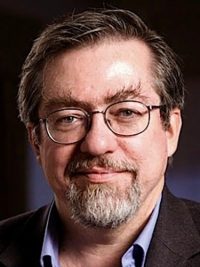Space Solar Power

The Space Solar Power session will address some of the key engineering, economic, and environmental challenges of constructing Space Based Solar Power Satellites (SBSPS). This session will review the most recent design and feasibility studies, advances in critical power transmission technologies, and the latest thinking in architectural concepts. The key questions this session will address are: Is there a path forward that is both doable and affordable to the first multi-megawatt pilot plant? And, given that space solar power would transform our future in space, and might provide a new source of virtually limitless and sustainable energy to markets across the world, why are we not vigorously pursuing Space Based Solar Power Satellites as a nation?

Co-Chair:
Gary Barnhard
CEO, Xtraordinary Innovative Space Partnerships, Inc.
Gary Barnhard – a self-described synergistic technological philanthropist, entrepreneur, and serial venture capitalist now serving as the President & CEO of Xtraordinary Innovative Space Partnerships, Inc. (XISP-Inc) a start-up company focused on International Space Station technology development work as well as Barnhard Associates, LLC, a systems engineering consulting firm and Internet Service Provider (Xisp.net) based in Cabin John, Maryland. He is a robotic space systems engineer whose professional work includes a wide range of robotic, space, and computer systems engineering projects. He received a Bachelor of Science in Engineering from the University of Maryland College Park in 1982 combining Aerospace Engineering, Materials Science, with graduate work in science policy, solar physics, and artificial intelligence/knowledge-based systems. He served as a Space Systems Engineer and Information Systems Architect for EER Systems, and as a Senior Space Systems Engineer on the Grumman Space Station Systems Engineering and Integration Contract (SSEIC) responsible for advanced automation and robotic systems support. He was the Executive Secretary of the Space Station Freedom Program Robotics Working Group and received a NASA Group Achievement Award for the Robotic Systems Integration Standards Interface Design Review Team, as well as an Outstanding Support Award from the Canadian Space Agency Space Station Freedom Program Liaison Office. He is an Associate Fellow of the AIAA and a life member of the National Space Society.
Co-Chair:
Gary Barnhard
CEO, Xtraordinary Innovative Space Partnerships, Inc.
Gary Barnhard – a self-described synergistic technological philanthropist, entrepreneur, and serial venture capitalist now serving as the President & CEO of Xtraordinary Innovative Space Partnerships, Inc. (XISP-Inc) a start-up company focused on International Space Station technology development work as well as Barnhard Associates, LLC, a systems engineering consulting firm and Internet Service Provider (Xisp.net) based in Cabin John, Maryland. He is a robotic space systems engineer whose professional work includes a wide range of robotic, space, and computer systems engineering projects. He received a Bachelor of Science in Engineering from the University of Maryland College Park in 1982 combining Aerospace Engineering, Materials Science, with graduate work in science policy, solar physics, and artificial intelligence/knowledge-based systems. He served as a Space Systems Engineer and Information Systems Architect for EER Systems, and as a Senior Space Systems Engineer on the Grumman Space Station Systems Engineering and Integration Contract (SSEIC) responsible for advanced automation and robotic systems support. He was the Executive Secretary of the Space Station Freedom Program Robotics Working Group and received a NASA Group Achievement Award for the Robotic Systems Integration Standards Interface Design Review Team, as well as an Outstanding Support Award from the Canadian Space Agency Space Station Freedom Program Liaison Office. He is an Associate Fellow of the AIAA and a life member of the National Space Society.

Co-Chair:
John C. Mankins
Mankins Space Technologies, Inc.
John C. Mankins, President of Mankins Space Technology is an internationally recognized leader in space systems and technology innovation, and as a highly effective manager of large-scale technology R&D programs.Mr. Mankins’ 25-year career at NASA and CalTech’s Jet Propulsion Laboratory (JPL) ranged from flight projects and space mission operations, to systems level innovation and advanced technology research & development management. He is also well known as an innovator in R&D management. For example, building on the original NASA ‘technology readiness level’ (TRL) scale for technology assessment (defined first with 6 or 7 levels in the 1970s), he extended the scale to flight systems and operations in the late 1980s (TRLs 8 and 9), published the first detailed definitions of the TRLs in 1995, and promoted the use of the scale by the US Department of Defense in the late 1990s. Before leaving NASA, Mr. Mankins was the manager of Exploration Systems Research and Technology within the Exploration Systems Mission Directorate with responsibility for a $416.8M annual budget, involving more than 100 individual projects and over 3,000 personnel. For 10 years, he was the manager of Advanced Concepts Studies at NASA, and the lead for critical studies of space solar power, highly reusable space transportation, affordable human exploration approaches, and other topics. He was the creator or co-creator of numerous novel concepts, including the ‘MagLifter’ electromagnetic launch assist system, the Internet-based NASA ‘Virtual Research Center’ the ‘Solar Clipper’ interplanetary transport vehicle, the ‘SunTower’ space solar power system, the ‘Hybrid Propellant Module’ for in-space refueling, the ‘HabBot’ mobile planetary outpost architecture, the Advanced Technology Lifecycle Analysis System (ATLAS), and others. In recognition of his accomplishments, he has received numerous awards and honors, including the prestigious NASA Exceptional Technology Achievement Medal (of which he was the first recipient).
Co-Chair:
John C. Mankins
Mankins Space Technologies, Inc.
John C. Mankins, President of Mankins Space Technology is an internationally recognized leader in space systems and technology innovation, and as a highly effective manager of large-scale technology R&D programs.Mr. Mankins’ 25-year career at NASA and CalTech’s Jet Propulsion Laboratory (JPL) ranged from flight projects and space mission operations, to systems level innovation and advanced technology research & development management. He is also well known as an innovator in R&D management. For example, building on the original NASA ‘technology readiness level’ (TRL) scale for technology assessment (defined first with 6 or 7 levels in the 1970s), he extended the scale to flight systems and operations in the late 1980s (TRLs 8 and 9), published the first detailed definitions of the TRLs in 1995, and promoted the use of the scale by the US Department of Defense in the late 1990s. Before leaving NASA, Mr. Mankins was the manager of Exploration Systems Research and Technology within the Exploration Systems Mission Directorate with responsibility for a $416.8M annual budget, involving more than 100 individual projects and over 3,000 personnel. For 10 years, he was the manager of Advanced Concepts Studies at NASA, and the lead for critical studies of space solar power, highly reusable space transportation, affordable human exploration approaches, and other topics. He was the creator or co-creator of numerous novel concepts, including the ‘MagLifter’ electromagnetic launch assist system, the Internet-based NASA ‘Virtual Research Center’ the ‘Solar Clipper’ interplanetary transport vehicle, the ‘SunTower’ space solar power system, the ‘Hybrid Propellant Module’ for in-space refueling, the ‘HabBot’ mobile planetary outpost architecture, the Advanced Technology Lifecycle Analysis System (ATLAS), and others. In recognition of his accomplishments, he has received numerous awards and honors, including the prestigious NASA Exceptional Technology Achievement Medal (of which he was the first recipient).
